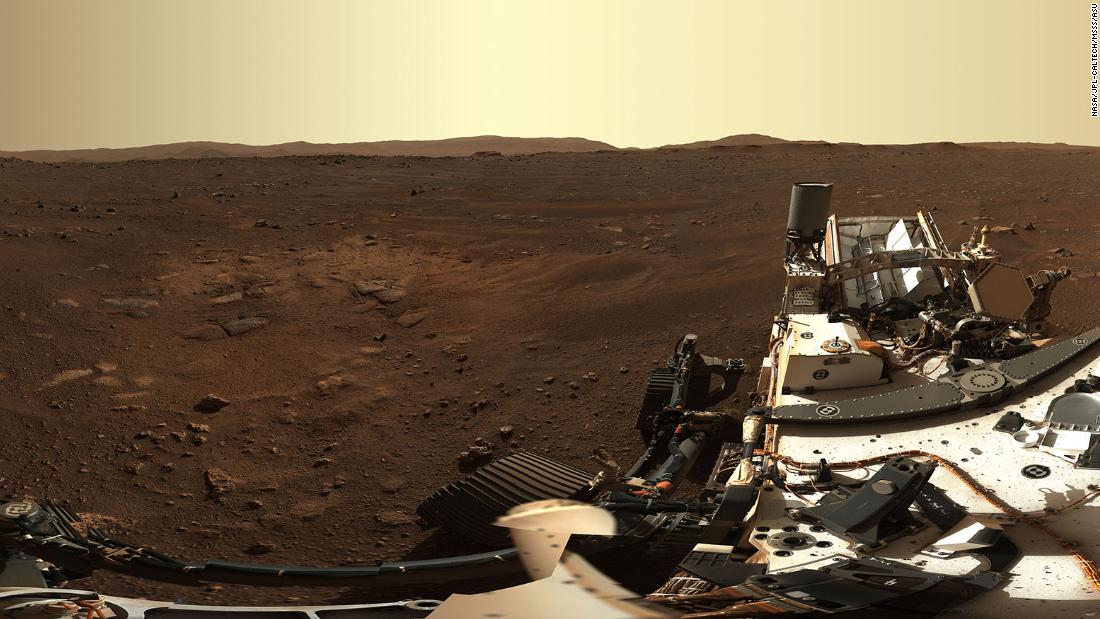
This is the first high-definition view of Jezero Crater, the site of a 3.9 billion-year-old dry lake bed where the rover will look for signs of ancient life over the next two years.
In the image, the crater rim and rock face of an old river delta can be seen in the distance. It’s similar to images previously shared by NASA’s Curiosity rover from its reconnaissance site in Gale Crater.
“We’re in a good place where you can see several features similar in many ways to Spirit, Opportunity and Curiosity at their landing sites,” said Jim Bell, principal investigator of the Mastcam-Z instrument at Arizona State. University’s School of Earth and Space Exploration, in a statement.
Perseverance also sent back a panorama over the weekend using its Navcams or navigation cameras.
Mastcam-Z is a new feature on Perseverance that builds on lessons learned from the Curiosity Rover’s Mastcam instrument. Curiosity’s Mastcam has two cameras with a fixed focal length, while Mastcam-Z can zoom.
These two cameras are like high-definition eyes on Perseverance as she shares her views with a team of scientists and engineers at home.
They sit on the mast of the robber and reach eye level for a person who is just over 6 and a half feet tall. The cameras are 9.5 inches apart to enable stereo vision.
The color images produced by Mastcam-Z are very similar to the quality you’d expect from your own digital HD camera, according to NASA officials. These cameras can not only zoom in, but also focus to capture video, panoramas and 3D images.
This allows scientists on the mission’s team to investigate objects that are both near and far from the rover.
In the panorama, details as small as 0.1 to 0.2 inches wide can be seen when an object is near the rover, while those between 6.5 and 3 meters are also visible in the distance.
These capabilities will aid the overall goals of the mission, both in understanding the geological history of the crater and identifying the types of rocks that the rover’s other instruments should study. Mastcam-Z’s views will also help scientists determine which rocks to collect samples from that will eventually be returned to Earth by future missions.


